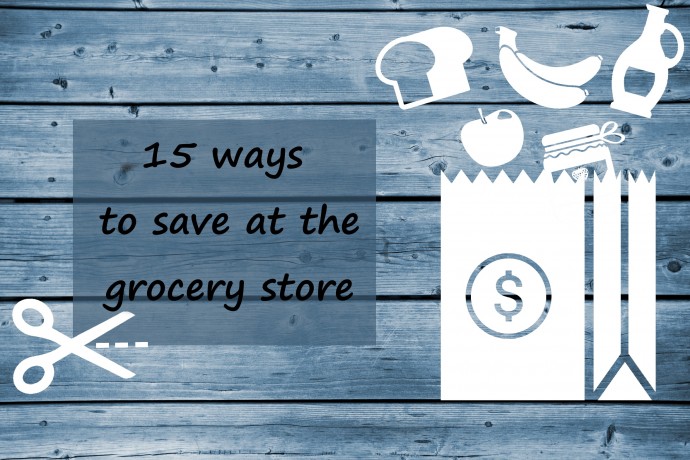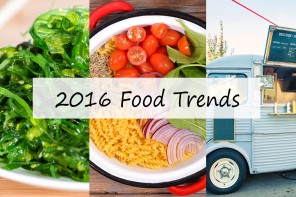Going to the grocery store is something that all families have to do. Some people love doing groceries, others hate it. Everyone has their own shopping habits and tricks to lower the bill, but prices are going up every year
In 2016, the cost of a grocery cart increased by 2% to 4%. A family with two parents and two kids spends $5,900 on food per year which is about $500 a month!
You really want to lower the amount you spend on groceries as much as possible, but how? Here are 15 tricks that will help you save at the grocery store:
1. Use up what you have at home first
Before planning a trip to the supermarket, ask yourself this: Do I really need to do groceries? Often, you think there isn’t enough food in the house for the week, but you’re mistaken. Use leftovers to make new dishes and do an inventory of what you already have. That way, you’ll avoid spending for no reason.
Use up leftovers and make a list that will help you reduce food waste which is a real problem on the pocketbook. In Canada, more than $50 of food per household is thrown out every week. Discover our tips on how not to waste!
2. Make a list and respect it
Before making your list, check the food inventory of what you already have at home. This will help you avoid buying products you already have on hand. As well, make a menu for the next few days so you don’t end up buying things you don’t need.
For maximum savings, put only the items on your list in your cart! It’s easy to succumb to temptation, so don’t stray in the aisles where there’s nothing on your list. And jot down a treat from time to time!

Tools to help manage your groceries
To help make your grocery list, consult flyers or grocery store apps which are really practical because they allow you to discover the weekly specials at stores near you all from your cellphone. Some apps even have integrated lists that let you track your groceries. To learn more, take a look at our article on grocery store apps.
3. Shop alone whenever possible
If you’re in a rush and don’t have time to negotiate with the kids, do the groceries by yourself. It can be difficult to not give in to kids’ demands which often include processed food like snacks and sugary treats.
On the other hand, it’s important for kids to go to the grocery store with their parents often so they can socialize, learn how to make good food choices and learn the value of food. Bring them with you when you have enough time to do the shopping.
4. Weigh food

Fruits, veggies, meat and cold cuts are often sold by the kilo or by the pound. To avoid nasty surprises, weigh your food so you can gage the approximate price. This way, if you take too much, you can always adjust!
5. Be aware of the sales process
Like any good business, grocery stores implement sales strategies to attract customers to certain products. Here are three traps to avoid if you want to lower your grocery bill:
The most expensive products are placed at eye level
Look at the shelves above or below the product you want because the most expensive version is right in front of you which encourages you to put it in your cart especially when you’re hungry.
2 for… or 3 for… deals that aren’t always deals
So why buy double or triple when you only need one? Rebates shouldn’t create needs, so stick to your list! Do you really want to risk seeing this product in your pantry or fridge in a few weeks down the road? If not, put only one in your cart.
Endcaps don’t necessarily have products on sale
Is an item on your list at the end of an aisle? Don’t just take it without question. You’ll save time, but not necessarily money! Items placed at the end of aisles aren’t always on sale the night before a flyer change. By taking them, you’ll think you’re saving which is not necessarily the case.
Going into the different departments is where you’ll find products that best respond to your needs whether in terms of price, size or brand.
6. Take advantage of the sales
Take advantage of sales to stock your cupboards and fridge with products that will be the most useful on a daily basis and that also store well. Frozen food, spices, dry ingredients like flour and sugar, and canned goods are always practical to have on hand. However, don’t buy something just because it’s on sale! Ask yourself, “Do I really need it?”
7. Use coupons

You can also find coupons in newspapers and magazines, on websites and sometimes in the grocery aisle itself. Keep an eye out because some products have coupons on them that can be used on your next purchase!
The principle for using coupons is the same as sales: if you don’t need a product for the coupon you have, then don’t buy it. Coupons can sometimes help you save a lot, but they can also get you to spend needlessly! If you use them wisely, you can lower your grocery bill considerably.
8. Organize your basket
In order to not forget anything once you get to the cash, sort your cart while you shop. Group products that have coupons together. Put them on top at the cash. Put items together if you want to compare prices with flyers that you’ll find useful.
9. Consider no name brands
You can find generic brands that are less expensive than name brands. To lower your grocery bill, choose house brands for canned goods, dry ingredients, dry pasta, beverages, oils, etc.
10. Cook big batches
A good way to save money is to buy food in bulk, make meals and store them however you prefer. This is a practical way to be economical! You’ll never find yourself stuck at suppertime as you’ll already have healthy meals that only require reheating.
If you want to save as well as have some fun, cook as a group. Invite your family and friends to putter around the kitchen and divvy up the dishes after. You’ll see that splitting the bill on delicious meals makes them even less expensive!
11. Don’t shop on an empty stomach

The worst mistake you can make is to go grocery shopping hungry! How could you possibly resist appetizing food when your stomach is growling? It’s a sure way to fill up the cart faster than the speed of light!
12. Choose the right size
Big formats encourage consumption
Big format sizes incite higher consumption of a product. You make a bigger bowl of cereal when there’s a lot left in the box or you have a second glass of juice because the carton is full. You also lower your reserves at the same speed as regular sizes which costs more and is a bad habit when it comes to your health!
Products that have many packets are often more expensive
There are many kinds of boxed snacks that come in snack sizes. For example, a box that has small bags of cookies containing 100 calories each is practical for lunchboxes, but often more expensive. Compare prices properly before putting products in your cart!
13. Focus on plant proteins
Reducing meat consumption has many advantages, notably you’ll save by integrating plant proteins into your diet. Legumes, nuts, grains and tofu all help you meet your daily quota of proteins while costing you less than a piece of meat. One try will convince you!
For delicious meatless recipes, take a look at our vegetarian recipes.
14. Buy local, seasonal products

Seasonal fruits and vegetables are less expensive because they require less transport than those that are not. As well, they don’t travel long distances, so are bursting with freshness! Take advantage of local products to encourage the economy in your area.
Eating local is easier than you think especially if there’s a market near you. If you don’t have one, check where the fruits and vegetables at your supermarket come from. You’ll definitely find things that are grown in your region or at least in Canada.
15. Shop online

Doing groceries online can help you resist the temptation found in grocery store aisles. It’ll be easier to maintain your grocery list if you shop online! Discover this new way in our article about buying groceries online.
It’s not always easy to respect your food budget. By applying these tricks, you’ll successfully lower your grocery bill, guaranteed! We’re curious – what are your little tricks to save on groceries?









